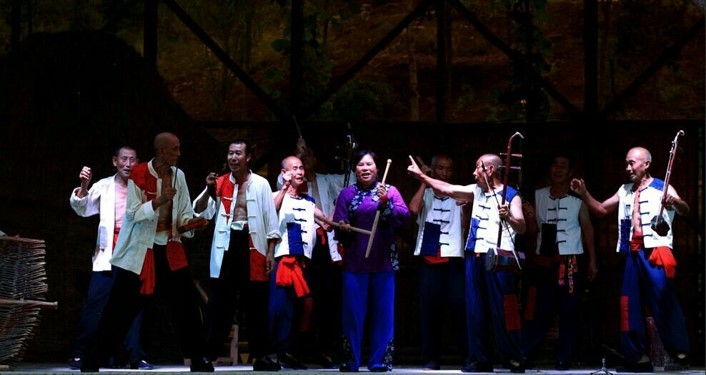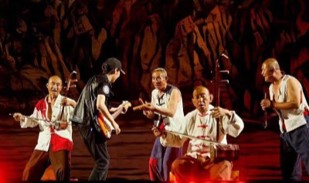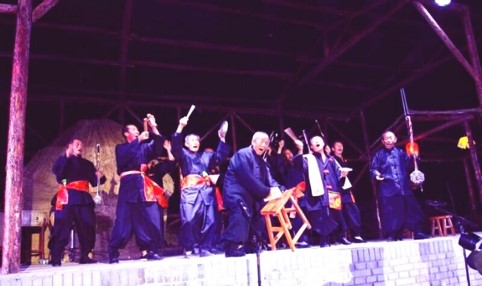Banjuan Performance
- Cultural Highlights
- Source:HUKOU
- Browse volume:
Banjuan is a form of entertainment used by scholars to promote ethics, morality and recreation in the old times. During the performance, one person will sing and everyone will accompany him. Suona horn, erhu, cymbal, flute, clapper, horse gong, bench, farm tools and other accompaniment are used. Its content is rich, it is easy to learn and sing Banjuan, and its venues are not limited. It has distinctive folk characteristics and is widely spread.

Liu Village, Hukou Town, Ji County, was the place where Banjuan originated. As early as the early Guangxu period of the Qing Dynasty, Ge Qingzao carried out Banjuan performances. Due to social turmoil, it was almost lost later. Fortunately, it was rescued by his heir Ge Fuying, Ge Qingzao's grandson.
Liu Village is located on the wall slope on the loess hillside of the east side of the world-famous Hukou Waterfall, about 3 kilometers away from Hukou. The village is a village with an only surname of Ge clan, who moved here from Yuci during the Revolution of the Song and Yuan Dynasties. It has been recorded in the family genealogy for 20 generations. Shipping ferry and sailing on dry land at Hukou have attracted celebrities and artists from Inner Mongolia Autonomous Region, Shaanxi Province, Shanxi Province, and Henan Province from all over the river to Hukou to enjoy the scenery and do business. Therefore, the villagers are good at communication, knowledgeable, smart, and profound cultural heritage. It is known that "there are more scholars than donkeys when you go up to the slope of Liu Village", which describes that there are more donkeys in the Liu Village, and there are more scholars than donkeys. Banjuan is the creation of the ups and downs of the folk life experience of their ancestors who grew up and lived in the countryside and docks for generations,combined with unique tunes, benches and percussion created by local artists, which has become a form suitable for the general public who love to see and hear.

For inheritor and retired teacher Ge Fuying, there are now a volume of Jinchai scroll and Song of Famine Year in the third year of Guangxu in the Qing Dynasty (1877). Banjuan is a kind of rap art, but it is different from Taoism tune singing in southern Shanxi Province. The whole song is divided into 16 bars and 158 sentences. The form of performance is bold and unconstrained, with beautiful singing tune and compact accompaniment, with ancient and distinctive folk characteristics.


